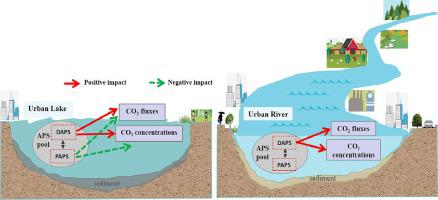当前位置:
X-MOL 学术
›
Ecol. Indic.
›
论文详情
Our official English website, www.x-mol.net, welcomes your feedback! (Note: you will need to create a separate account there.)
The impact of the acidic polysaccharides pool on CO2 concentrations and fluxes: A case study on urban waters of China
Ecological Indicators ( IF 6.9 ) Pub Date : 2024-03-19 , DOI: 10.1016/j.ecolind.2024.111904 Lizhen Liu , Qi Huang , Huacheng Xu , Yongming Wu , Lin Zhu , Minghang Chu
Ecological Indicators ( IF 6.9 ) Pub Date : 2024-03-19 , DOI: 10.1016/j.ecolind.2024.111904 Lizhen Liu , Qi Huang , Huacheng Xu , Yongming Wu , Lin Zhu , Minghang Chu

|
Urban rivers and lakes are major components of inland waters. A deeper understanding of how carbon dioxide (CO) emissions are impacted in urban waters is important for quantifying the contributions of urban waters to the global carbon budget. Acidic polysaccharides (APS) are a major component of the carbon pool, though there is still much uncertainty associated with CO concentrations and fluxes. Here, we measured the dissolved APS (DAPS), particulate APS (PAPS), and CO concentrations and fluxes in a typical urban river (the Ganjiang River) and two lakes (Xiang Lake and Qingshan Lake) in China, and assessed the impact of different APS fractions on CO concentrations and fluxes. Our results show abundant DAPS and PAPS in urban waters, with PAPS being the main form in winter while DAPS the main component in other seasons. The Ganjiang River and the urban lakes were supersaturated with CO at concentrations of 35.67 ± 19.99 μmol·L & 27.79 ± 17.52 μmol·L and emissions of 64.52 ± 53.38 mmol·(m d)& 36.56 ± 56.97 mmol·(m d) from river and lake waters, respectively. Linear mixed-effects model analysis further revealed that increased DAPS concentration led to significantly higher CO concentrations and fluxes, whereas PAPS exhibited a negative influence on CO concentrations and fluxes in the urban lakes. Our work provides deeper insight into CO evasion in inland freshwater ecosystems as well as carbon neutrality in urban waters.
更新日期:2024-03-19



























 京公网安备 11010802027423号
京公网安备 11010802027423号